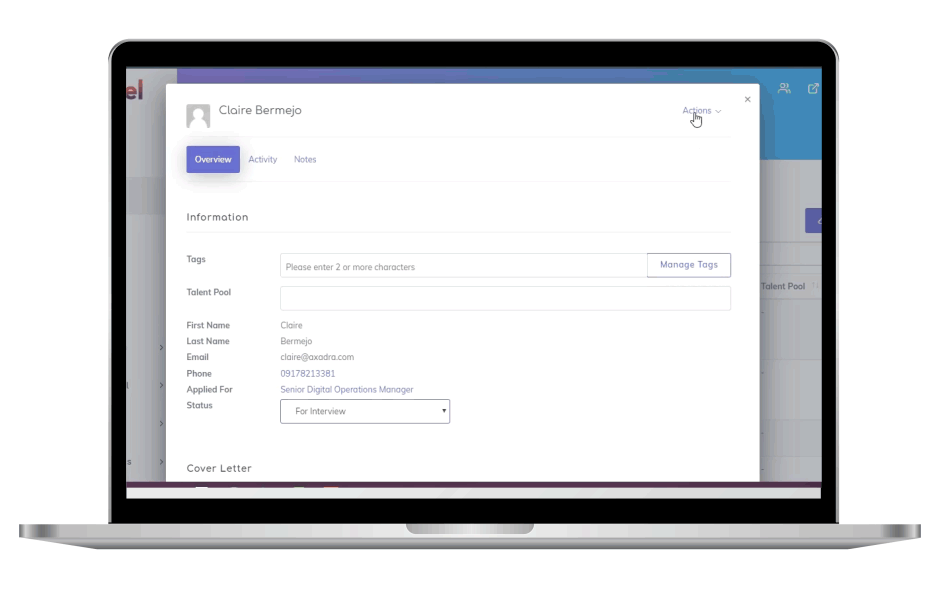Most of us are bound to meet and form relationships with people who come from different walks of life. And as much as possible, businesses and organizations should strive to create a working environment that allows their employees to do so. After all, diversity in the workplace isn’t just a passing fad in recruitment: it can lead to increased revenue and better overall performance.
If you find that your workforce doesn’t have a lot of diversity, it may be because the way you attract potential employees only creates a very homogenous candidate pool for your organization.
Together with our web-based recruitment software, we can help broaden your candidate pool by attracting a more diverse candidate selection. Here’s how to build a diverse candidate pool to open up your company to the best qualified candidates regardless of the different walks of life they come from.
Understand What Is a Diverse Candidate Pool
Your idea of a diverse candidate pool might be limited to adding more women or people from different races, but these aren’t the only minority groups you have to consider. You obviously have the primary types of diversity such as:
- Age – a mixture of Boomers, Gen X, Millennials, and Gen Z can apply for the same position.
- Physical abilities – someone who has special needs can still be considered for a position because their condition doesn’t affect their ability to perform a job.
- Race and ethnicity
- Gender and sexual orientation
But then you also have the secondary types of diverse employees, such as:
- Education – a mixture of high school graduates, college graduates, and post-graduates.
- Socio-economic class
- Marital status
- Religious beliefs
- Language
Now, the hard part of understanding diversity is the concept of intersectionality. To over-simplify intersectionality, it means that these factors in diversity aren’t necessarily black and white and these factors will intersect in many points for different people.
For example, let’s say that you want to improve workplace diversity by adding more women to your workforce. As it stands, your workplace has five millennial heterosexual male college graduates from an upper-middle class background.
Diversity is not as simple as adding five women to your talent pool and calling it a day. If you add four millennial heterosexual female college graduates from an upper-middle class background and one 40-year old transgender bisexual college graduate from a middle-class background, you could say that you’ve balanced out your company’s diversity in terms of sex.
But in terms of age, sexual orientation, gender, education, and social-economic bracket, diversity hasn’t really changed in your office. Instead, you have that one outlier who is at risk of feeling left out because your company isn’t actually as diverse as you think.
When thinking about diversity in your candidate pool, it’s important to consider all the factors, not just sex or race. Consider that the experiences of men and women are not exactly the same because of these little differences. And by keeping that in mind, you can open up your business by making it oriented to people from all walks of life.
Make Your Job Postings Gender-Inclusive
Whether you’re recruiting on Facebook, LinkedIn, Glassdoor, or any other appropriate job site, the language you use may be what turns off diverse candidates from the listing.
For example, if you’re using he/him pronouns for a job posting for an engineer or she/her pronouns for a posting of a personal secretary, you may be doing one of two things. First, you’re turning off good potential candidates of the opposite gender because it seems like you’re perpetuating outdated beliefs that certain jobs are for one sex only. And not many people will want to work in a sexist workplace like that in 2020.
And second, you may be accidentally misinforming potential applicants that the position is for one sex only. While it’s accepted some jobs can be done by anyone regardless of sex or gender, it’s understood that sometimes there are cases when there’s a good reason that businesses are putting a sex preference. For example, a store may prefer a saleswoman over a salesman because their products are beauty products and cosmetics catered to female consumers.
So if you want to open a job to all genders and then start a job posting like “She must be able to do the following tasks,” you’re making potential male applicants think that the job posting is only considering female applicants.
If sex and gender is not important to the job, keep your job posting gender-neutral and inclusive. Using “He/she” can make non-binary genders feel excluded, so the safest route is to use either second person or the gender-neutral they/them/their. For example:
- “You will be responsible for creating motion graphics for the company’s clients.”
- “This position will require the employee to oversee operations in branches in multiple cities, so they must have a valid driver’s license.”
- “They will also perform other tasks expected of them.”
This is the safest route to go, especially if you want a diverse candidate pool for a position regardless of gender.
Drop the Educational Requirement
For some job positions, a certain level of educational attainment is essential for your candidates to qualify. But if the job doesn’t necessarily need a specific level of education or you’re more interested in their skills than their diploma, remove educational attainment as a job requirement in your posting.
Some recruiters may be against this because they think it might open the floodgates for unqualified applicants, making it more difficult to sift through your candidate pool and find applicants. But what you’re actually doing is opening the job position to people who are skilled to do this regardless of educational attainment.
Not all good candidates have a high educational attainment the same way that not everyone with a post-graduate degree make good employees. By dropping the educational requirement, you’re getting your applicants to instead look at the skills required by the position. Those that can’t perform those skills will obviously not apply, and those that try to fake can be spotted with the right hiring process.

Promote Inclusive Benefits
Some benefits like Christmas bonuses and overtime pay may be appreciated by majority of your workforce, but some types of employees would appreciate certain types of benefits even if it won’t affect everyone. Of course, these benefits may not apply or be interesting for everyone, but it shows your employees and potential applicants that your business cares about its diversity and catering to everyone’s primary needs.
A few of these benefits include:
- Extended maternity and paternity leave for new mothers, fathers, and those who have adopted children.
- Parental leave for parents who want time off for their children’s events.
- Medical insurance with the option to include immediate family members in their coverage, especially if your employee is the breadwinner of their family.
- Retirement benefits, especially if you want to attract older diverse candidates.
- Free lunch or free snacks: some of your employees may simply appreciate it as a perk, but for middle and lower-class employees it can be a huge help in cutting down their expenses.
- Flexible hours and work-from-home options
Take note that you can’t please everybody: not everyone in your diverse candidate pool will be attracted to all these benefits. Those who aren’t interested in having children won’t care about parental leave, while young fresh graduates may not be thinking about retirement benefits from their first job. But the fact that you have benefits that interest certain groups shows how your business is willing to cater to different types of applicants.
Use Niche Job Boards
LinkedIn, Indeed, and Glassdoor are popular websites for jobseekers. But have you tried looking for niche job boards catering to certain disadvantaged groups? Here are a few you might be interested in:
- Diversity Working – largest pro-diversity online job board
- Black Career Network – for Black Americans who feel prejudiced in regular job sites against white Americans in regular job listing sites.
- Hispanic/Latino Professionals Association – helping the Latino and Hispanic community by posting job listings from organizations committed to diversity.
- Working Mums – for mothers in the United Kingdom looking for part-time, home-based, or flexible job opportunities to help balance work and their role as a parent.
- Recruit Disability – job board for those with physical conditions.
- Hire Autism – for those who are on the autism spectrum.
- 70 Million Jobs – for those with criminal records having difficulty finding companies that will hire people with a record.
By adding to job boards like these, you’re opening your organization to diversity. You’re adding diverse candidates to your pool of applicants because you’re offering the position to groups that are often neglected or overlooked in favor of other applicants. You’re showing applicants here that your business is committed to opening your doors in favor of talent, skill, and ability to bring something special to the table rather than factors like sexual orientation, age, and lifestyle that wouldn’t normally affect one’s ability to be productive at work.
Blind Resumes and Interviews
Admittedly, some recruiters may have certain biases that could affect their ability to choose from a diverse candidate pool. The best way to avoid biases is to ignore parts in the resume that don’t really matter. Because job applicants may have different formats, it’s important to ignore or blackout information that wouldn’t affect a person’s ability to work.
For example, ignoring information like their birthdays can help avoid ageism. Ignoring additional information like the number of children they have can also prevent a bias against people with children and those without. Even the name of one’s school can have a bias: you might feel more inclined to hire Applicant A because they went to an Ivy League but has no related job experience than hire someone who attended a local college but has years of related expertise.
Should they qualify and reach the interview, don’t ask questions that aren’t related to the job. Small talk is fine, but topics like age or questions like “aren’t you a little old to be applying for this job?” are completely inappropriate and non-inclusive.
Inclusivity offers plenty of perks not just for your diverse candidate pool but also for the productivity and insight your business can benefit from. How to increase diverse candidate selection will ultimately rely on how your business chooses to handle recruitment, but these steps are our advice to widening your talent pool regardless of everyone’s background.















